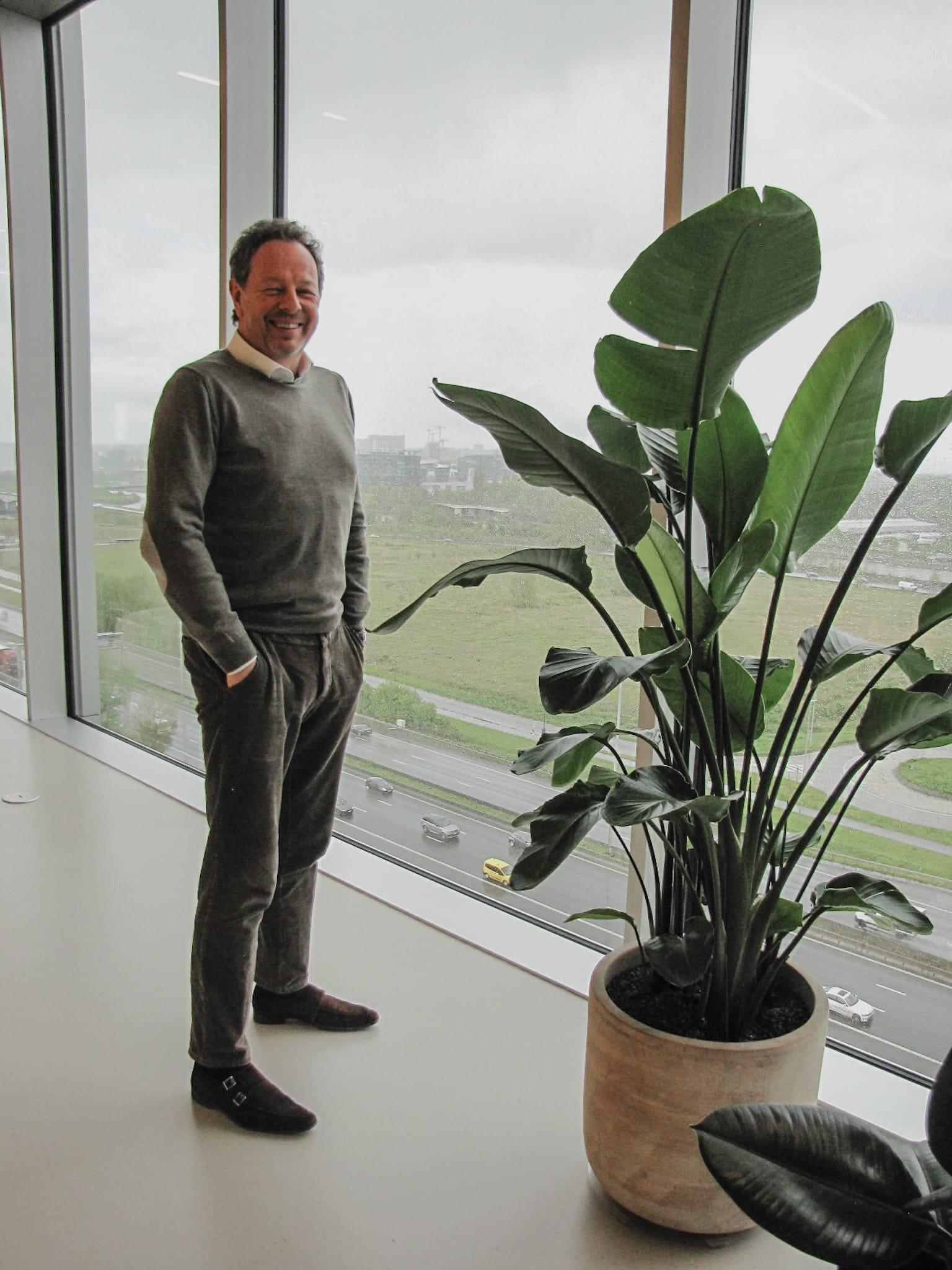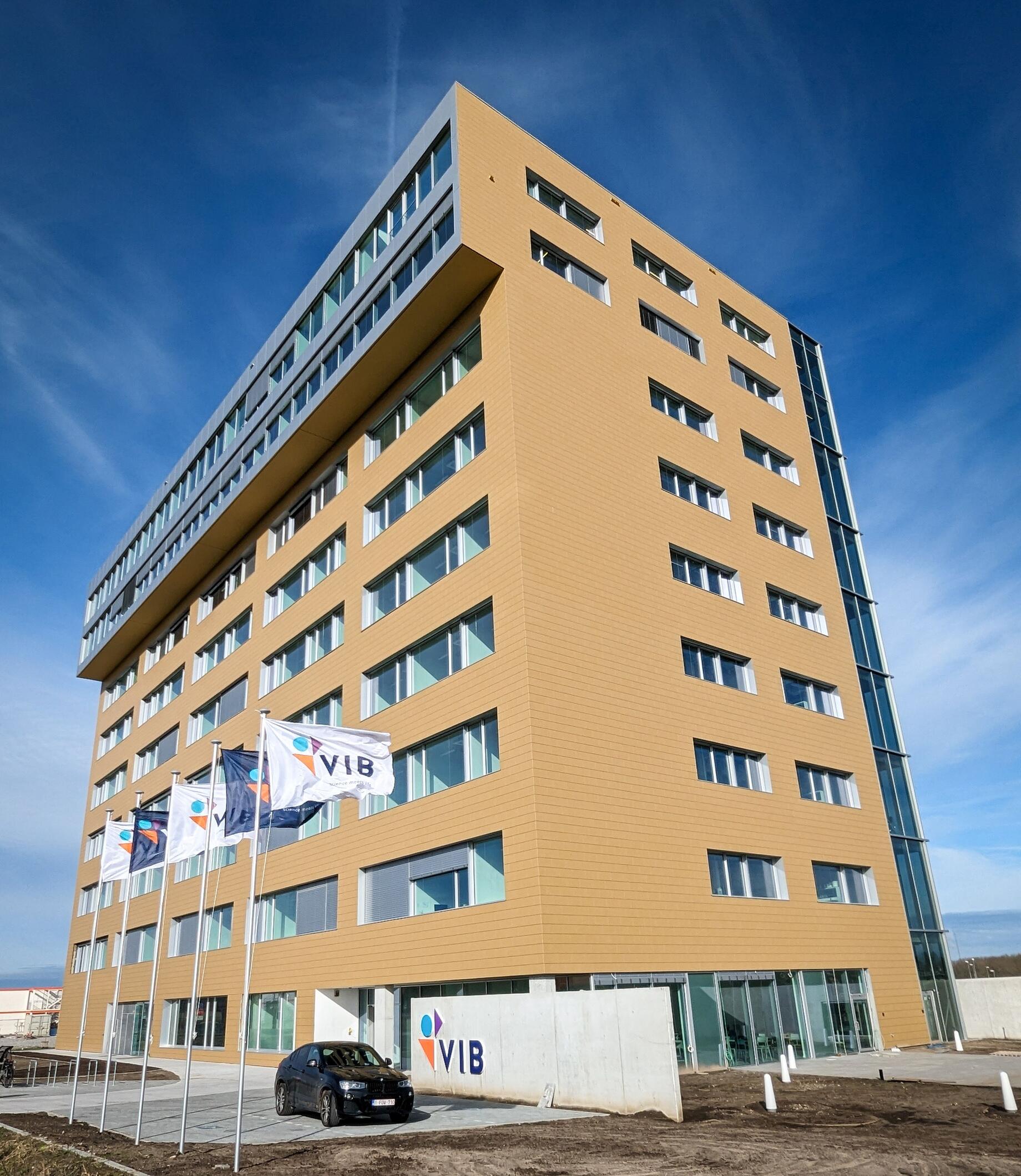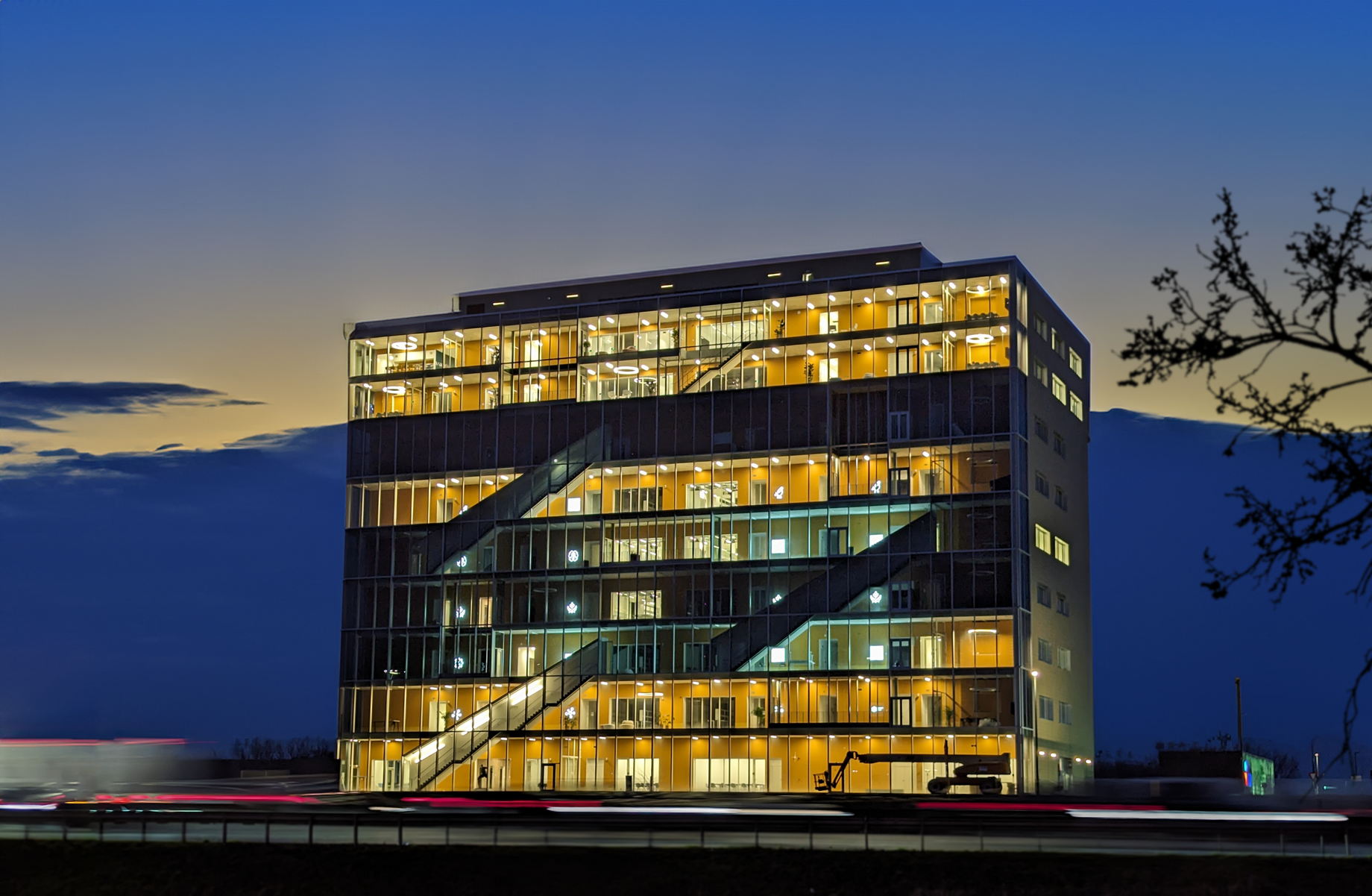VIB boosting biotech in Ghent with a new incubator
Belgium is internationally known as a proper 'Biotech Valley', in part thanks to the discovery of the TI plasmid in Ghent during the 1970s.
This breakthrough has contributed significantly to the growth and success of the biotech industry, even on a global level.
VIB further built on that success with its official establishment in 1995. Over the past 25 years, VIB has been dedicated to nurturing the growth of the biotech industry. Recently, they have taken a step forward in their mission with a new building in Techlane Ghent Science Park, Campus Eiland Zwijnaarde. The building is designed to provide more significant support to the burgeoning biotech sector by offering state-of-the-art facilities and resources to its members. You can't miss it: 8 stories high next to the E40. "This new building is not only a beacon for Techlane Ghent but also a real milestone for VIB," says Wim Goemaere, COO of VIB. "Based on 25 years of experience (the first incubator opened in 1999, ed.), we’ve considered the infrastructure needs of biotech start-ups, and we didn’t compromise on that."
A window offering a historical perspective on the origins of VIB
We meet Wim on the 8th floor, with a breathtaking view over the vast city of Ghent. He immediately starts talking enthusiastically about the early days of VIB because, as the fifth employee, he was there from the very beginning. "With the establishment of VIB in 1995, the Flemish government, led by Luc Van den Brande, resolutely chose biotechnology as a spearhead industry for Flanders at the time. They did this based on existing strengths: strong researchers at our universities and a few new, emerging biotechnology companies. Risky research conducted within a number of strong university research centres was supported with grants. This approach deviated strongly from the project-based, classical way of raising funds for research. The 'old' methods often made it difficult to make strategic choices and continue to follow them over longer periods."
"We’re now in the sixth cycle, and it’s working remarkably well. In addition to pure research, the intention was to create an ecosystem. Because this research had to be translated into concrete applications for patients and, by extension, society. Within VIB, a dedicated technology transfer team was set up. They were tasked with creating economic fabric, which they did primarily by investing in our local talent. Because, let's be honest, our greatest asset in Flanders is our pool of knowledge. It was carefully considered whether it was necessary to apply for patents or whether there was sufficient evidence to start a new company, a spin-off."
-
More about the biotech legacy in Ghent
In the late '70s, students made an important discovery under the guidance of professors Jeff Schell and Marc Van Montagu. They discovered the 'Ti-plasmid' (Tumor-inducing plasmid), which can act as a delivery system to add another piece of DNA to plants, allowing for the genetic modification of plants.
These two illustrious names are mentioned in the same breath as Walter Fiers. His team decoded the complete genome of a virus for the first time in 1972. In 1976, they unravelled the MS2 RNA bacteriophage, comprising a staggering 3569 RNA building blocks in a specific sequence. The team took a remarkable ten years to map this out entirely, but it resulted in the world's first complete RNA virus genome and firmly put Ghent on the map in the field of Molecular Virology.
-
This combination, our start-up incubator supplemented with all these accelerators for growing companies, has boosted biotech in the Ghent region.
The vital building blocks of an ecosystem
To achieve a successful valorisation, you don’t just need clever minds; you also require suitable materials and specialised investment funds. "Especially in the early years, the infrastructure needed to start a biotech company was not readily available. The first incubator was opened in 1999 with 2500m² of net surface area. Ultimately, this grew into a facility of 6000m², which today serves as the home base for about twelve companies. For example, Ablynx and Devgen started there. In addition, numerous private initiatives were launched, including two bio-accelerators, Bioscape and Obelisc. This density of accelerators is truly unique in Flanders. This combination, our start-up incubator supplemented with all these accelerators for growing companies, has boosted biotech in the Ghent region."
Over time, the focus shifted not only to start-ups from 'homegrown' sources (from VIB) but also start-ups from other knowledge centres in Flanders and even foreign companies or research groups settled in our incubator. One of the very first users of the incubator was Devgen. Under Thierry Bogaert's leadership, this company evolved from red biotech (drug development) to green biotech (agro-biotech). From the beginning, there was potential for developing new drugs in collaboration with Janssen Pharmaceutica, now Johnson & Johnson. Ultimately, they evolved into agrotech applications, with research into genetically modified organisms. In 2006, it became the first VIB start-up to go public, and in 2012, Devgen was acquired by Syngenta. This is a reasonably exceptional trajectory, especially as all of this happened under the leadership of the same Flemish CEO, who managed the entire journey from startup to IPO to exit."
"Then there's Cropdesign, who enabled BASF to come to Techlane. We mustn’t forget that these biotech companies have attracted great international interest, leading to several multinationals opening branches here. We had the Centre for Plant Systems Biology, with Dirk Inzé and formerly Marc Van Montagu, which is one of the top three centres in the world. All of this has made the green biotech industry here so strong."
The following is a long list of company names and founders, from Orionis Biosciences to Exevir and Mark Vaek with Ablynx. "But the point I want to make is this: we’ve launched about 37 start-ups, and only about four have disappeared. This number may not be very impressive to some, but by being very selective, we've also been able to deliver quality. Moreover, it should not be forgotten that no major VCs were present at that time. VIB took its stories to top VCs abroad to raise financing. These were all groups with knowledge and expertise in biotechnology. A quarter of a century later, a particular ecosystem has grown from this, with several important VCs active in the sector."
"To build a good ecosystem, you must meet at least four conditions. First, scientific knowledge must be present because you have no good foundation without know-how. The proximity of knowledge institutions also provides the necessary talent pool. This also leads to a continuous influx of talented people who can work in the sector and start new projects. By the way, more than 60 different nationalities work here! There must also be sufficient financial resources because this research takes a long time and is capital-intensive. Finally, it would be best if you also had the appropriate infrastructure to make everything possible in our sector. In Ghent, we are blessed with an environment that more than meets all the requirements."
-
The point I want to make is this: we’ve launched about 37 start-ups, and only about four have disappeared. This number may not be very impressive to some, but by being very selective, we've also been able to deliver quality.
The allure of the new building
At VIB, they believe Ghent needs an additional 1000 m² of incubator space annually. “That’s also the premise of this building: we constructed it with growth in mind. The net space in this building is 6000 m², accommodating approximately 22 modules. Each module has three laboratory spaces, four office spaces, four general support areas, and three instrument rooms. In these instrument rooms, you can place equipment that you can turn on in the morning, leave unattended throughout the day, and eventually obtain a read-out of results. The latter are located in the core and do not receive natural light. The other spaces are built around them.”
“Thus far, two companies have committed: Molecubes and 272 Bio. Molecubes is a spinoff of Ghent University and develops advanced imaging systems for preclinical research. 272 Bio is a British company that has a stable collaboration with the Faculty of Veterinary Medicine at Ghent University. They work with the well-known antibody technology that Ablynx and Confo Therapeutics rely on. By the end of this year, we aim to fill at least one floor and, ideally, even more. Word-of-mouth advertising is doing its job, and we regularly contact interested parties from various angles. Naturally, we also collaborate closely with the people from FIT to promote our story at the international level and with Tech Transfer from Ghent University. Now, our building stands out, and people suspect there’s still room here (laughs).”
“What makes our offering so interesting is that we provide a comprehensive service package. Start-ups encounter a ‘prêt-à-porter’ here: you come in, drive your equipment inside, start it up, and continue your research. When you secure funding from investors and find yourself in a shell setting, you still need to decide which devices go where… I can assure you that those discussions can take a long time, resulting in valuable time lost that could be better spent achieving agreed-upon milestones. Here, the modules are fully equipped, and we also handle maintenance, cleaning, efficient waste collection, and other logistical support. There are excellent meeting facilities and interactive zones, so people are not completely isolated in their laboratory spaces. They are not just renting a private section, which is certainly necessary for conducting research with discretion, but much more than that. The building is designed to facilitate spontaneous interactions among employees from different companies.”
-
With this new building, we're not just planting a seed for the further growth of the ecosystem,we're immediately sowing an entire field. We’re ready for the future.
Looking for the future in biotech, beyond the microscope
Meanwhile, Jérôme Van Biervliet, the General Director, has just walked in. Both are looking very hopeful towards the future. ‘We’re in the south of Ghent,’ says Wim, ‘but you can see the city centre right there (points), with a thriving digital ecosystem. And there (points), on the other side of Ghent, lies the harbour, North Sea Port, which has entirely different economic activities. They’ve got industrial biotech, the so-called ‘grey’ biotech. So, I’m looking forward to more interactions between the different branches. Consider Amphistar, a start-up that was selected for our biotope program, scaling up their product in the Bio Base Europe Pilot Plant.’”
“With this new building, we're not just planting a seed for the further growth of the ecosystem,” Jérôme adds, “we're immediately sowing an entire field. We’re ready for the future.”
Discover Invest in Ghent
Eager to become part of this inspiring biotech ecosystem? The team Invest in Ghent is ready to help you start or scale your business in Ghent through our expert local guidance and introduction, so your business can grow even further.
Contact us


